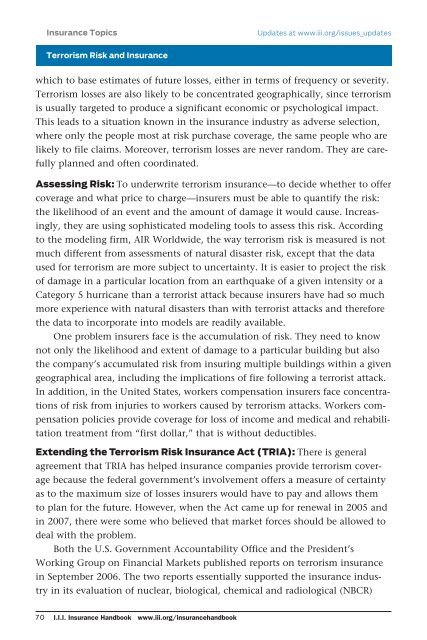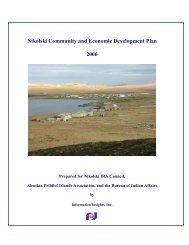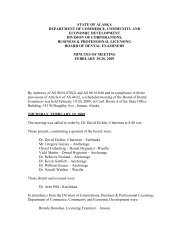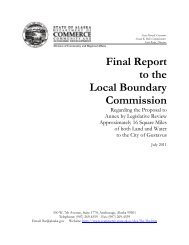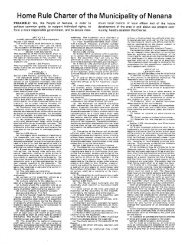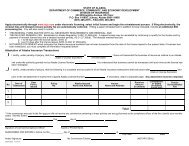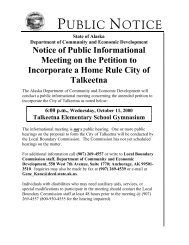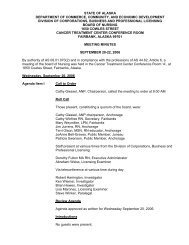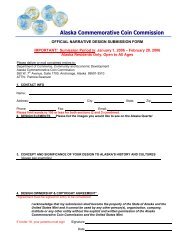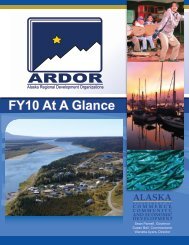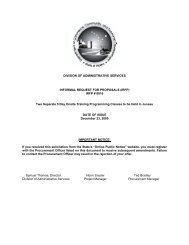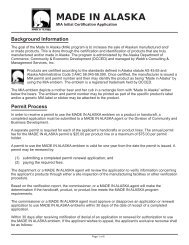Insurance Handbook - Alaska Department of Community and ...
Insurance Handbook - Alaska Department of Community and ...
Insurance Handbook - Alaska Department of Community and ...
You also want an ePaper? Increase the reach of your titles
YUMPU automatically turns print PDFs into web optimized ePapers that Google loves.
<strong>Insurance</strong> Topics Updates at www.iii.org/issues_updates<br />
Terrorism Auto <strong>Insurance</strong> Risk <strong>and</strong> <strong>Insurance</strong><br />
which to base estimates <strong>of</strong> future losses, either in terms <strong>of</strong> frequency or severity.<br />
Terrorism losses are also likely to be concentrated geographically, since terrorism<br />
is usually targeted to produce a significant economic or psychological impact.<br />
This leads to a situation known in the insurance industry as adverse selection,<br />
where only the people most at risk purchase coverage, the same people who are<br />
likely to file claims. Moreover, terrorism losses are never r<strong>and</strong>om. They are carefully<br />
planned <strong>and</strong> <strong>of</strong>ten coordinated.<br />
Assessing Risk: To underwrite terrorism insurance—to decide whether to <strong>of</strong>fer<br />
coverage <strong>and</strong> what price to charge—insurers must be able to quantify the risk:<br />
the likelihood <strong>of</strong> an event <strong>and</strong> the amount <strong>of</strong> damage it would cause. Increasingly,<br />
they are using sophisticated modeling tools to assess this risk. According<br />
to the modeling firm, AIR Worldwide, the way terrorism risk is measured is not<br />
much different from assessments <strong>of</strong> natural disaster risk, except that the data<br />
used for terrorism are more subject to uncertainty. It is easier to project the risk<br />
<strong>of</strong> damage in a particular location from an earthquake <strong>of</strong> a given intensity or a<br />
Category 5 hurricane than a terrorist attack because insurers have had so much<br />
more experience with natural disasters than with terrorist attacks <strong>and</strong> therefore<br />
the data to incorporate into models are readily available.<br />
One problem insurers face is the accumulation <strong>of</strong> risk. They need to know<br />
not only the likelihood <strong>and</strong> extent <strong>of</strong> damage to a particular building but also<br />
the company’s accumulated risk from insuring multiple buildings within a given<br />
geographical area, including the implications <strong>of</strong> fire following a terrorist attack.<br />
In addition, in the United States, workers compensation insurers face concentrations<br />
<strong>of</strong> risk from injuries to workers caused by terrorism attacks. Workers compensation<br />
policies provide coverage for loss <strong>of</strong> income <strong>and</strong> medical <strong>and</strong> rehabilitation<br />
treatment from “first dollar,” that is without deductibles.<br />
Extending the Terrorism Risk <strong>Insurance</strong> Act (TRIA): There is general<br />
agreement that TRIA has helped insurance companies provide terrorism coverage<br />
because the federal government’s involvement <strong>of</strong>fers a measure <strong>of</strong> certainty<br />
as to the maximum size <strong>of</strong> losses insurers would have to pay <strong>and</strong> allows them<br />
to plan for the future. However, when the Act came up for renewal in 2005 <strong>and</strong><br />
in 2007, there were some who believed that market forces should be allowed to<br />
deal with the problem.<br />
Both the U.S. Government Accountability Office <strong>and</strong> the President’s<br />
Working Group on Financial Markets published reports on terrorism insurance<br />
in September 2006. The two reports essentially supported the insurance industry<br />
in its evaluation <strong>of</strong> nuclear, biological, chemical <strong>and</strong> radiological (NBCR)<br />
70 I.I.I. <strong>Insurance</strong> <strong>H<strong>and</strong>book</strong> www.iii.org/insuranceh<strong>and</strong>book


